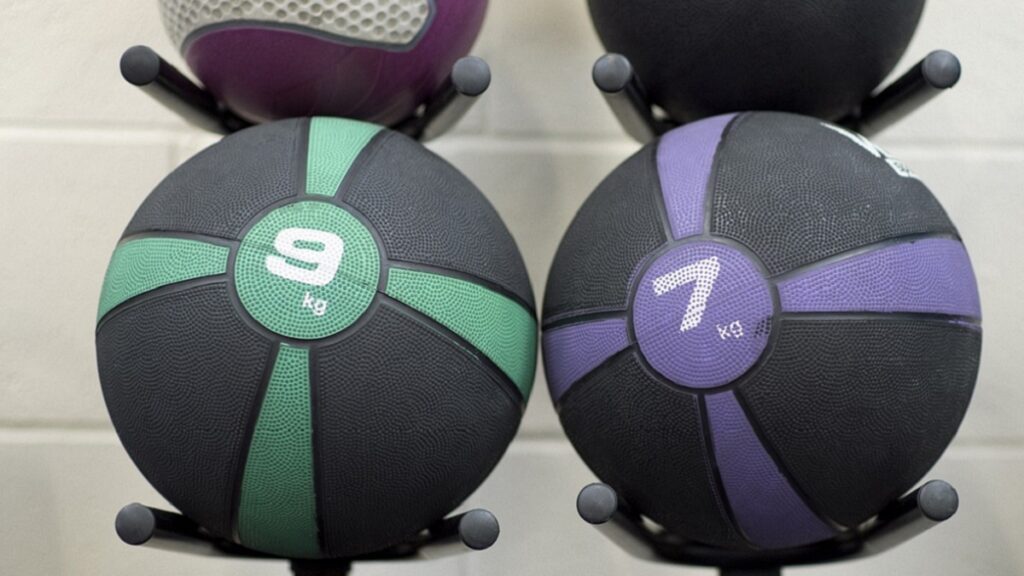Shoulder pain can result from trapped nerves around the neck. The pain causes much discomfort and may affect your posture. Once this pain occurs, you’ll need nerve gliding exercises for the shoulder to correct them.
Nerve gliding exercises for the shoulder include shoulder roll, chick turn, and head turn. These exercises help to relieve pinched nerves and recover the range of motion. You can also release a trapped nerve in your shoulder by taking non-steroidal painkillers. Yet, nerve gliding exercises work the best to release trapped nerves.
You can recover from Sciatic nerve pain with neural gliding. So, the article discusses some shoulder nerve gliding exercises to ease discomfort and improve fitness.
Nerve Gliding Exercises for the Shoulder
Nerve gliding exercises for the shoulder are gentle exercises or stretches that can help you feel better and gain relief in your nerves. The nerve gliding shoulder exercise you choose depends on the severity of the trapped nerve.
Irrespective of the type of exercise or how you perform them, move gently and carefully.
Head Turn
That’s one of the neck motions you can perform the simplest under normal conditions. However, turning your head can be more complex and unpleasant if you have a pinched nerve in your shoulder. Consequently, be careful to just turn your head slightly without hurting.
- Straighten your neck and head as you look forward.
- Then look to your right and stay in that position for 10 seconds.
- Repeat the process on the left-hand side.
- You could bend your head upward, downward, or sideways if it doesn’t hurt.
That’s it for now! You can repeat this as often as you like.
Shoulder Roll
This exercise puts a tremendous strain on your shoulder than the head turn. As a result, be cautious because you might feel some pain when performing the exercise.
- Start by pulling your shoulders up.
- Then roll your shoulder blade down and back.
- About five times, repeat the exercise in this manner.
- Try performing this exercise in reverse.
Chin Tuck
The usefulness of the exercise depends on the location of your pinched nerve. The chin tuck exercise aims to strengthen your neck. As a result, it becomes more tense to improve your posture.
Here are the steps when performing the exercise.
- Put your hands on your chin.
- Pull your chin down slowly until you have a “double chin” back towards the neck.
- Maintain this “double chin” stance for only five seconds.
- Then relax the shoulders for 3 seconds and take some rest
- Several more times, repeat the chin tuck.
Once you’ve mastered the chin tuck, you can even perform it without the aid of your hands. There is another variation of the chin tuck in which you tilt your head upwards. But keep off it if it causes you to feel uneasy.
What Is the Purpose of Nerve Gliding Exercises?
Nerve Gliding Exercises for the shoulder help in retaining shoulder fitness. Anywhere along the ulnar nerve’s course, adhesions or inflammation can make the nerve immobile or even cause it to become stuck. Nerve gliding is your go-to to return your fit body.
Also, when paired with conventional physical therapy, nerve gliding exercises for the shoulder are gentle techniques to relieve pinched nerves and recover the range of motion.
Stretching inflamed nerves is a gentle exercise known as “nerve flossing.” It can increase their range of motion and lessen their discomfort. It is also known as neural gliding or nerve gliding.
The most effective way to use nerve flossing is with other therapies. So, ask your doctor for a diagnosis if you don’t already have one. They can advise the ideal course of treatment based on the underlying cause of your nerve pain.
During rehabilitation, nerve gliding exercises are necessary for the radial, median, sciatica, and ulnar nerves. The most typical ailments that call for nerve gliding exercises include radial neuropathy, cubital tunnel syndrome, carpal tunnel syndrome, and cubital tunnel syndrome. By accurately identifying the symptoms, therapists can maximize the benefits by prescribing various nerve gliding activities.
Nerve stretching helps patients experience less pain, but there shouldn’t be any vigorous exercise. The diseases and nerves worsen if symptoms aren’t correctly diagnosed and treated. The nerve gliding exercises should be performed several times daily, depending on the problem. After a few weeks of consistently performing nerve gliding exercises for the shoulder, you can experience reduced pain.
How Do You Release a Trapped Nerve in Your Shoulder?
You can release a trapped nerve on your shoulder by performing nerve gliding exercises for the shoulder. Yet, if symptoms persist, you can consider seeing a physical therapist.
By gathering medical history and performing a physical exam, doctors can begin to identify the cause of a patient’s shoulder pain.
They will inquire about a person’s symptoms, including when they initially became apparent and what makes them worse. A physician will also check the neck, shoulder, and adjacent areas to see if there are any apparent issues.
Most patients with pinched nerves in the shoulder get better on their own and don’t need any medical attention.
A doctor will take into account the following while recommending a course of treatment:
- What is triggering the strained nerve
- How the pinched nerve affects day-to-day activities
- How bad the discomfort is
What are the Treatments for a Trapped Nerve?
A doctor may first suggest nonsurgical therapy to treat your pinched nerve. Yet, the doctor may recommend surgery if your discomfort does not improve after trying these treatments or worsens.
For a pinched nerve, nonsurgical treatments include:
- Taking non-steroidal painkillers, such as ibuprofen or naproxen
- Using a soft cervical collar to restrict movement in the neck while the nerves heal
- Using oral corticosteroids to relieve inflammation, using an injection of corticosteroids to reduce swelling and inflammation, and engaging in physical therapy and exercises to improve range of motion and reduce stiffness
- Short-term use of painkillers to lessen the most noticeable consequences of shoulder pain
Shoulder pain from a pinched main nerve can occasionally come and go. However, if degenerative changes bring on a person’s pain, they may worsen with time.
Do Nerve Gliding Exercises for the Shoulder Work?
Yes, nerve gliding exercises for the shoulder helps restore your nerves to work at their best with the help of movement. Yet, there are specific nerve gliding movements associated with specific nerves.
On the other hand, as long as you don’t overexert your body, nerve flossing doesn’t hurt your neck. Remember to perform these great exercises cautiously.
Also, if you haven’t previously, you should engage with your physician to identify the source of your nerve pain before attempting it. Nerve flossing could worsen your symptoms if you have more severe nerve damage. So, start the exercises as early as you notice the symptoms to prevent worsening the situation.
How Long Do Nerve Gliding Exercises for the Shoulder Take To Work?
Nerve gliding exercises for the shoulder help reduce nerve tightness after six to eight weeks. The first signs of recovery that come a few weeks after beginning are less pain or tingling. Furthermore, you’ll need to extend your nerves even more quickly as you advance.
To get the perfect result, you’ll have to perform the exercises daily or regularly to ensure no tightness or soreness after six to eight weeks. Also, a physical therapist (PT) can instruct you when to stop the workouts.
For some disorders that include any nerve tightness or stress, nerve gliding activities, including ulnar nerve glides, may be performed as part of the rehabilitation process.
It may consist of sciatica brought on by a pinched nerve or muscle strain. Great exercises for nerve flossing may concentrate on the upper limbs or lower extremity nerve gliding strategies, depending on your demands.
What Does Nerve Gliding Feel Like?
Nerve gliding exercises for the shoulder lessen the pain along the extended leg’s back, neck, and back. All the dragging, tingling, numbness, warmth, cold, dampness, or itching on the neck to your back may fade away after consistent nerve gliding. Instead of holding the nerve in a stretched position, move it up and down continuously to maintain its movement.
The tingling or soreness accompanying nerve flossing should disappear after the workout.
You might perform the moves too forcefully if you experience lingering pain or tingling following the nerve flossing exercise. If that occurs, consult your physical therapist to determine the best action.
You move the nerve covering through the tunnels while gradually stretching it during nerve gliding. That may cause some tingling or discomfort during the nerve gliding exercises for the shoulder, but it is best to keep such symptoms minimal. When the glide practice is over, this should shortly go away.
Only performing these exercises under a trained hand therapist’s supervision is very important. That’s because the nerve may get inflamed and suffer potential long-term nerve damage if it is overstretched.
How Do I Know If I’ve Trapped a Nerve in My Shoulder?
You’ll know you have a trapped nerve in your shoulder if you feel discomfort and pain. A pinched nerve happens when the surrounding tissues, such as bones, cartilage, muscles, or tendons, put too much pressure on the nerve. This pressure may result in discomfort, weakness, tingling, or numbness.
A pinched nerve can also develop in many locations in the body. For instance, a herniated disk may compress a nerve root in the lower spine. Pain that travels down the back of your leg could result from this. Similar to how a pinched wrist nerve can cause numbness and pain in your index finger and hand (carpal tunnel syndrome).
Other signs and symptoms of a pinched nerve include:
- Sensation loss or numbness in the nerve’s supply area
- Sharp, unbearable, or burning discomfort that could be radiating
- Sensations of tingling and pins and needles (paresthesia)
- Weakening of the afflicted muscles
- A recurring feeling that a hand or foot has “gone asleep.”
If the signs and symptoms of a pinched nerve persist for many days and don’t improve with self-care techniques like rest and over-the-counter painkillers, consult your doctor.
How Can I Naturally Decompress My Nerves?
Although shoulder nerve compressions are not enjoyable, you can naturally do them. Sometimes the pain is so severe that you cannot even stand. Being overweight, carpal tunnel disease, pregnancy, a shoulder injury, and other illnesses, including arthritis, are just a few of the causes of a pinched nerve in the shoulder.
This area’s pinched nerves are particularly unpleasant since they restrict your range of motion. Although there aren’t many solutions, you can try any of the following methods to improve your shoulders:
- Rest. While it might seem dumb, resting, which means not moving your arm, hand, or shoulder, can help the nerve calm down in 48 hours. If you fail to use the arm, an elastic bandage would be an alternative for “taping” the arm firmly to the side.
- Practice good posture. Standing and sitting up straight can make all the difference by relieving pressure on the nerve.
- Try hot or cold compresses. Many people find relief by alternating between ice packs used for 20 minutes then heat packs used for 20 minutes. That reduces swelling and inflammation, and it also relieves pain.
- Alternatively, sleep on the side that is not affected. Keep your weight off the pinched nerve to prevent putting strain on it.
- Have some chamomile tea. If the culprit is a pulled or tight muscle, this sort of tea, a well-known muscle relaxant, can relieve pressure on the nerve.
- Call your therapist to schedule a visit if, after 48 hours, you still have pain or discomfort. Frozen shoulders and irreversible nerve damage can result from ignoring shoulder pain.
Can You Massage Out a Trapped Nerve?
Yes, you can massage a trapped nerve on your neck because it relaxes the muscles. They also offer immediate pain alleviation. Also, massaging different nerves enables the patient to unwind and stay still for a while. That way, cortisol levels fall, facilitating easier muscular relaxation and healing.
Additionally, exerting pressure on the pinched nerve can ease stress, lessen pain and inflammation, and increase circulation. It will also aid in relaxing your body’s muscles and the area that is being impacted.
A patient’s general health can improve, and symptoms can reduce with massage therapy. Furthermore, massage treatment can reduce sensations like tingling, numbness, or pain.
How Do I Untrap My Neck and Shoulder Nerves?
If you have pinched neck or shoulder nerves, you could be going through much pain. However, you could alleviate this discomfort at home with a few simple nerve gliding exercises for the shoulder.
Also, getting into a comfortable bed and getting some rest is one effective method of treating shoulder nerve discomfort. You may also apply a hot or cold compress to your shoulder. A soft cervical collar that immobilizes your neck is also beneficial.
Maintaining proper posture is another helpful strategy for managing and preventing the pain of a pinched nerve in your shoulder. Wearing a cheap posture corrector might be a good idea when performing activities that need you to move your shoulders.
Your shoulder nerve discomfort may also be helped by therapies and exercises like massage and physiotherapy, but only since they are comfortable for you. View the variety of classes we have above!
Non-steroidal anti-inflammatory medicines (NSAIDs) should assist in numbing the pain if all other treatments are unsuccessful or the discomfort is too intense to handle.
FAQs
Should I Do Nerve Glides Every Day?
Yes, you can do nerve gliding exercises for the shoulder every day. Exercises for nerve gliding reduce cubital tunnel syndrome pain. Repeat the exercises once daily, three to five times a week, or as many times as possible. That way, you’ll expect faster recovery without harming your nerves.
What Exercise Is Good for Nerve Damage?
The best workout for regaining your nerves is walking. Try to stretch for 20 minutes before each of your daily 30 minutes of walking, five days a week.
If you’re having trouble walking, go to the mailbox or around the house. Grab a friend if you want to make it a social occasion. A stroll is only the start.
How Many Times a Day Should You Do Nerve Glides?
Depending on your degree of fitness and preferences, you can perform nerve gliding exercises for the shoulder two to three times daily. However, the best strategy is to work each shoulder two to three times daily. You can exercise the nerves with little risk of harm if you do that.
Winding Up
Trapped nerves on your shoulder can cause great havoc and discomfort. Yet, with these exercises, you’ll promote a small amount of nerve glide or mobility. Although they shouldn’t hurt, you could feel some stretching or stress.
You can try nerve gliding exercises for the shoulder two or three times each day to see if they affect your symptoms in any way. A Symptom Diary can help you keep a note of any changes.
We also recommend you briefly describe what you did and your feelings about how the day or night went. You can also record your pain levels with a pain scale from 1 to 10 each day you perform the exercises.
Visit our blog for more information on shoulder injuries and recovering exercises.



